Warning: These historical photographs are very graphic.
From Tiexue:
Late Qing Dynasty female criminal “Death By A Thousand Cuts” photos
This punishment was for extremely serious crimes. These photos are famous and appear all the time. This is just a recent example.
Comments from Tiexue:
chidun:
If these photographs make you uncomfortable, please forgive me!
This execution is beyond cruel!
sxhzpoiu22:
Wasn’t it said that the person cannot be allowed to die until the very last cut? Why is it that by the middle of the photos, the head was already cut off ??? And also, was it really 3,333 cuts?
接班人:
Aren’t there still 18-year-old female convicts sentenced to death?
I am sad for China’s men, your insult/abuse towards China’s women is the cause of China going bad.
jjy00000:
Fuck! Yet another zhuang bi! As long as that person indeed committed a crime, what does she being a woman or not or how old she is have anything to do with it? Is the law made specifically for men only???
rajk747:
Suggest China reinstate this kind of punishment, specifically against corrupt officials.
江梳公主:
Why are you posting this kind of post! What kind of rubbish are you advocating! Is this fun? Pervert/deviant.
接班人:
Mothers, on the whole, are the wombs and breasts that gave us life, us respecting them is respecting ourselves, which is raising our own positions. When killing women, it is not necessary to have them on their knees or to cut off their reproductive organs, as people who know to cherish mothers are noble.
小兵司南:
Too cruel! Is it necessary for an execution to be this way?
打不赢jiu跑:
Each era does what each era does, unless you guys could ask a primitive man to no longer drink blood and wear fur, sit in a Western restaurant, and immediately pick up a small knife and fork to eat steak? Don’t you understand any historical materialism!
hanbing1110:
A sick/ill society [Qing Dynasty], even if foreigners did not invade, it itself would have slowly died away.
专业民兵001:
I’ve been on Tiexue for two years now and this group of pictures has made me the most angry! Doing this to an old woman, using such a cruel punishment, where is the humanity! Looks like liberation from the Qing Dynasty is Founder Sun’s [Yat-sen] incomparable greatness! I hate feudalism, hate ignorance, and I salute our founder!
RedKnife:
The West doesn’t have torture? Kao!
woshimingming:
Humans are the most cruel animals, also the most savage animals, also the most fragile animals.
chidun:
No matter whether the photographs are posted or not, this kind of torture indeed existed in our country’s history. Knowing this is also a good thing.
Actually, it is said that there are death penalties/executions even more cruel than this in the West.
Nowadays, some countries still have torture.
sailor_chin:
It appears that this is not the authentic dismemberment execution. It looks like in that time of decline/decay, even punishments were in decline/decay.
The dismemberment execution I recall requiring 500 cuts, with the very last being a stab into the criminal’s chest before he can die, and if the criminal dies before enough cuts are made, the person cutting will be in trouble.
The punishment are savage, but sometimes it is very effective.
Some photographs of male criminals suffering the same death penalty:
Some English information from Wikipedia:
Slow slicing (simplified Chinese: 凌迟; traditional Chinese: 凌遲; pinyin: língchí, alternately transliterated Ling Chi or Leng T’che), also translated as the slow process, the lingering death, or death by a thousand cuts, was a form of execution used in China from roughly AD 900 until its abolition in 1905. In this form of execution, the condemned person was killed by using a knife to methodically remove portions of the body over an extended period of time. The term língchí derives from a classical description of ascending a mountain slowly.
Lingchi was reserved for crimes viewed as especially severe, such as treason and killing one’s parents. The process involved tying the person to be executed to a wooden frame, usually in a public place. The flesh was then cut from the body in multiple slices in a process that was not specified in detail in Chinese law and therefore most likely varied. In later times, opium was sometimes administered either as an act of mercy or as a way of preventing fainting. The punishment worked on three levels: as a form of public humiliation, as a slow and lingering death, and as a punishment after death.


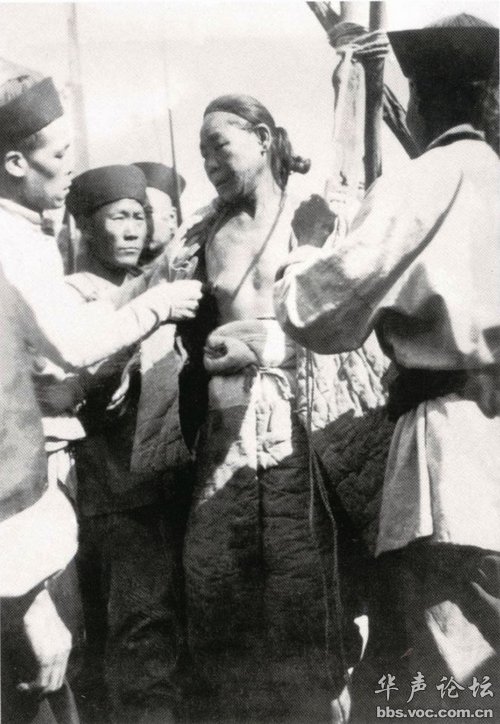
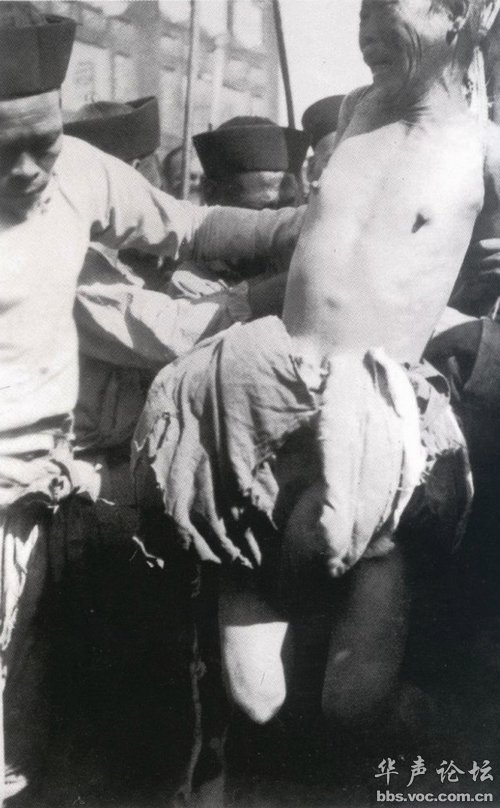


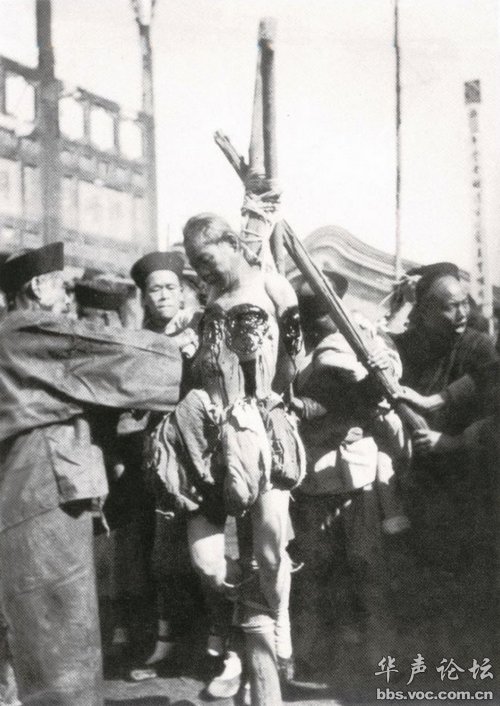



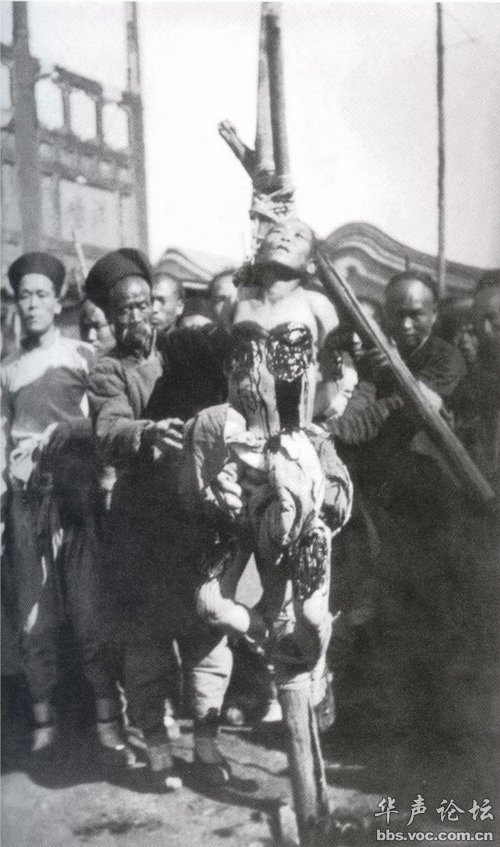


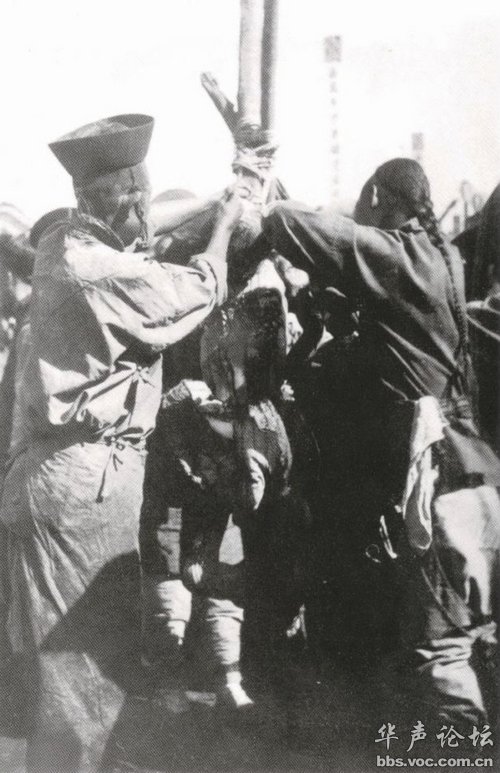



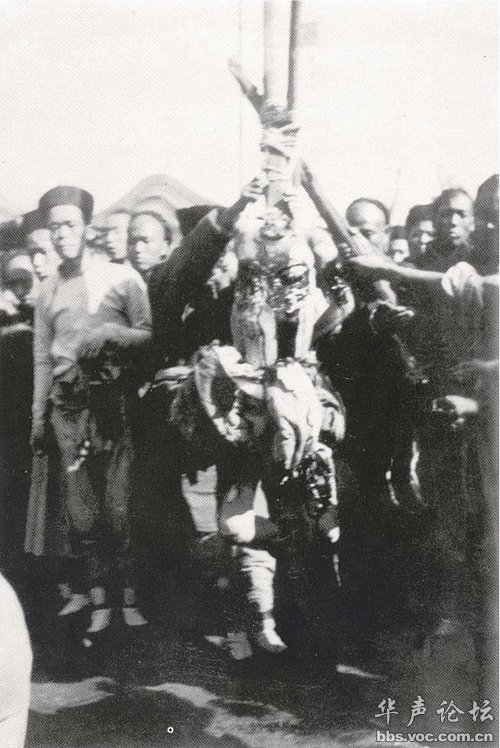







198 Comments
Leave a Reply2 Pings & Trackbacks
Pingback:Chinasmack « Wortgefecht
Pingback:How do you like your Medicine FF - Page 2